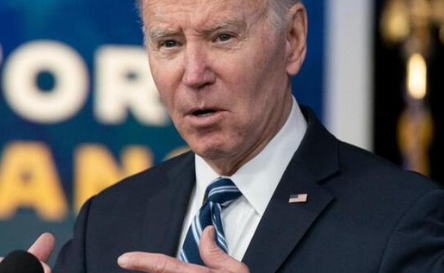They seem to think that we are the Soviet States of America. They are now lying with every release of info. They then rely on their media to cover it all up as they are exposed for their lies.
Employment rates differ significantly across different demographic groups. For example:
- The employment rate for men is slightly higher than for women, although this gap has narrowed over recent decades.
- White and Asian Americans tend to have higher employment rates compared to Black and Hispanic Americans.
- Younger workers (ages 16-24) and older workers (ages 55+) have lower employment rates compared to prime-age workers (ages 25-54).
The recent revelation that job gains between March 2023 and March 2024 were overstated by a staggering 818,000 jobs has ignited fresh concerns about the accuracy of economic data and the state of the U.S. economy under the Biden-Harris administration. While some critics suggest foul play, a closer look at the numbers reveals a more unsettling reality: many middle-class Americans are taking on multiple jobs just to stay afloat, and this has skewed the employment statistics.
BIDICKS AND DEMONCRATES
as Phony as a
$3.00 BillOpinion: Sudden shift in jobs data shows workers are struggling to survive Biden-Harris inflation #Inflation #Unemployment #GDP #Interestrateshttps://t.co/fVCmBqpIwL
— bernhard trivalos (@snoopchef) August 23, 2024
In normal circumstances, the Bureau of Labor Statistics (BLS) makes minor revisions to its job reports, but this year’s adjustment is the largest in 15 years, reminiscent of the Great Recession’s turmoil. This significant revision has left many questioning the reliability of the data used by policymakers, and rightly so. The implications are far-reaching, with the Federal Reserve relying on these figures to make critical decisions about interest rates.
The discrepancy between the Household Survey and the Establishment Survey is particularly telling. While the Household Survey reported minimal job growth, the Establishment Survey indicated a gain of 2.5 million jobs over the same period. This gap is concerning because the Establishment Survey, which counts each job rather than each worker, may inflate job numbers in an economy where people are juggling multiple jobs to cope with rising costs. This discrepancy could explain the large downward revision.
Moreover, the method used by the Establishment Survey to estimate job creation from new businesses is notoriously error-prone. The Biden administration’s boasts about the number of new businesses formed during their tenure may have been exaggerated, further distorting the employment picture.
For many Americans, these technical details might seem distant, but they have real-world consequences. The BLS’s overly optimistic job reports may have prevented the Federal Reserve from lowering interest rates, despite rising unemployment and signs of a cooling labor market. This has kept mortgage rates high, making homeownership increasingly unaffordable for many.
Federal Reserve Chairman Jerome Powell made his strongest remarks yet signaling that an interest rate decrease is in line with the just adjusted job numbers. The Biden-Harris administration had to lower their job creation by 818,000 jobs.https://t.co/OfL0NquSVp
— Robbie Mouton (@mcgmouton57) August 23, 2024
The Federal Reserve, led by Chairman Jerome Powell, has been cautious about reducing rates, likely due to the administration’s continued high levels of federal spending, which threatens to keep inflation elevated. While the overstated job numbers have given the Fed a reason to hold off on rate cuts, the continued high rates could push the economy into a recession, further undermining public trust in the government.
More Info
- Workforce Shortages: Many industries are facing workforce shortages, particularly in healthcare, technology, and skilled trades. Employers are increasingly offering higher wages, bonuses, and flexible work arrangements to attract and retain workers.
- Remote Work: The COVID-19 pandemic has accelerated the trend toward remote work, with a significant portion of the workforce continuing to work from home or in hybrid arrangements. This shift has implications for labor market dynamics, including wage levels, geographic distribution of jobs, and worker preferences.
- Gig Economy: There has been a rise in gig and freelance work, with an estimated 15-20% of the U.S. workforce engaged in some form of gig work. This trend reflects changing employment preferences and the evolving nature of work.
Key Points:
- Massive Overstatement: Job gains were overstated by 818,000 between March 2023 and March 2024, raising concerns about the reliability of economic data.
- Discrepancy in Surveys: Differences between the Household and Establishment Surveys suggest the inflation of job numbers due to multiple job holdings.
- Economic Impact: The overstated job reports may have prevented the Federal Reserve from lowering interest rates, keeping mortgage costs high.
- Federal Spending Concerns: The administration’s high levels of spending may be contributing to inflation, complicating the Fed’s decision-making.
- Erosion of Trust: The inflated job gains and economic uncertainties have further eroded public trust in the government.
RM Tomi – Reprinted with permission of Whatfinger News



